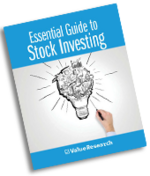Can you tell us how to use the Value Research Performance section (both trailing returns and discrete period returns) to compare funds during both up and down markets?
- Anuprat
I myself use the Value Research performance graph to assess a fund's performance. When you go to any fund's page, you will see a long-term trailing returns graph under the Performance Tab. In the trailing returns graph, click on the 10-year time period, you will get to see a fund's performance over a long tenure, which may include both the rising and declining phases of the market. You can also see a fund's performance between two specific dates by putting it in the graph. Put two dates in the graph when the market was falling and analyse the fund's performance. If the fund has been able to fall less than the benchmark and the category average (check under Discrete Performance tab), then it is a good fund. Correspondingly, check the fund's performance in the rising market. If the fund has delivered superior returns in the rising market compared to the benchmark and the category average, this is a great fund. Repeat this exercise to check its performance over two-three up and down cycles. The higher the number of cycles in which the fund has beaten the benchmark and category average, the better it is. Thus, for such a fund, I will be willing to stay with that fund longer even during a period of underperformance. This is simply because it has done well in the past. You can also add another fund in the trailing returns graph to compare the performance of two funds.
Also, look at the Fund Manager tab to check who is managing the fund currently. It will also provide you with details like how long the current fund manager has been managing the fund and what else he manages. These two things taken together should give you a fair idea about how good or bad the fund is and help you build your conviction on the same.



